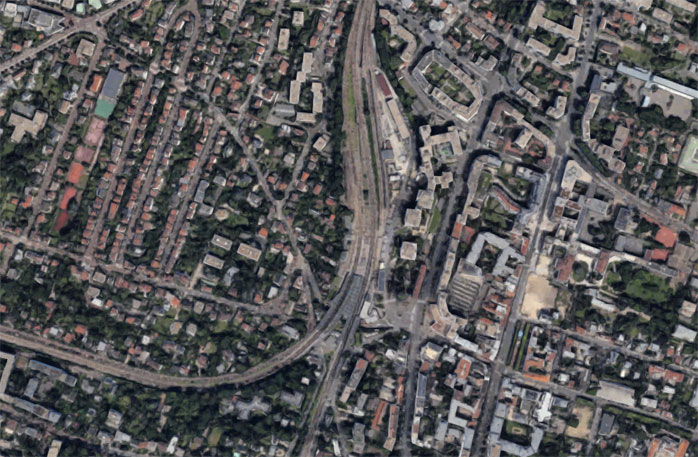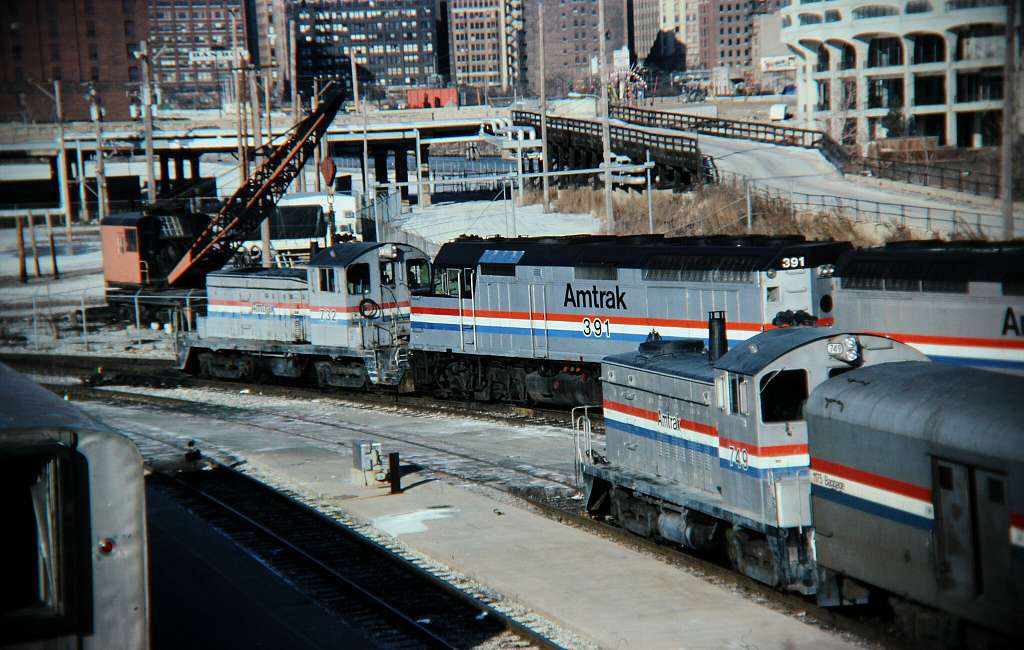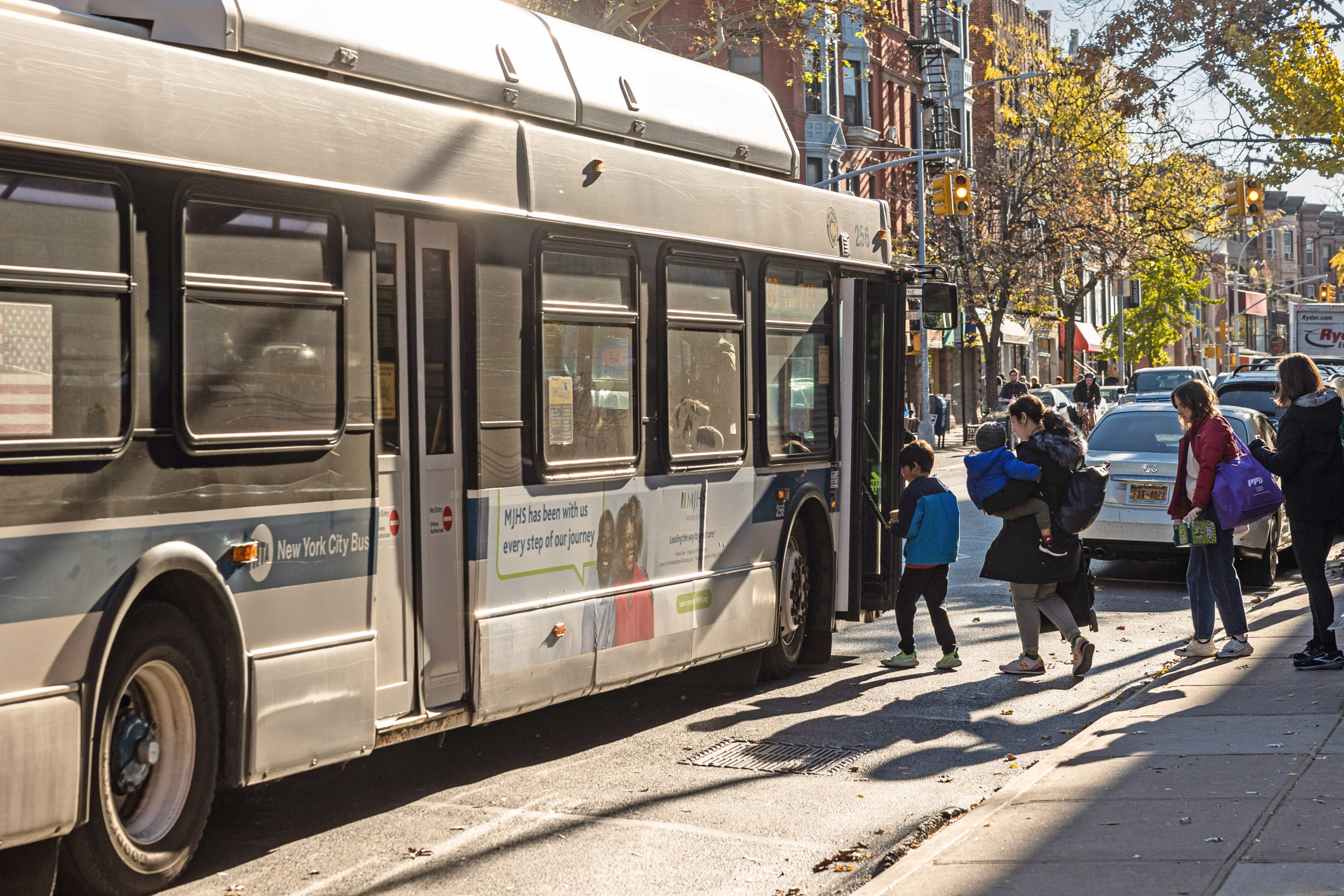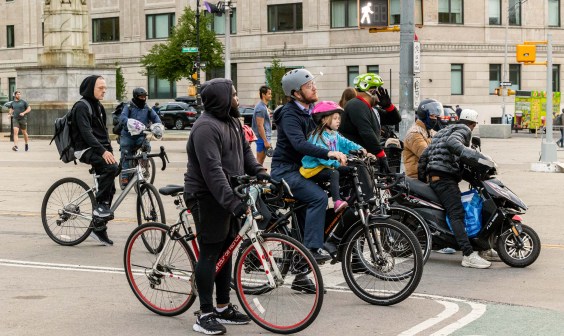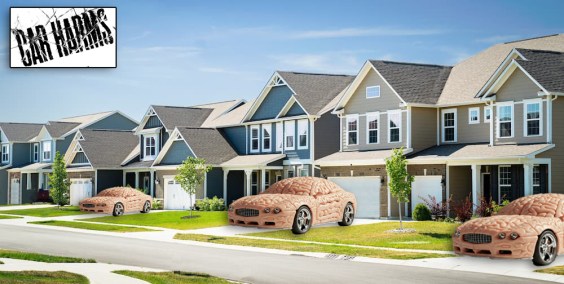In Europe it's common for regional rail systems to get ridership comparable to that of the subway in the central city. But in America, this is unheard of. In an earlier post I looked at how Paris achieves this ridership with regional rail service -- the RER and Transilien networks -- that runs much more frequently than three comparable American systems: the LIRR, Metro-North, and the MBTA Commuter Rail. There is a second, equally important reason for the discrepancy: land use.
American commuter rail stations are typically surrounded by parking. The intent is for suburban commuters to drive to the park-and-ride and take the train to the central business district. Few middle-class workers would be willing to live car-free near such stations and take the train to the city: They'd need a car to run errands, and the stations themselves are too hostile to walking.
The MBTA is especially bad here, since it sometimes avoids traditional town centers when siting commuter rail stations, preferring locations with more convenient parking. Nobody except suburban drivers would use such stations, and suburban drivers have no reason to use the stations except for peak-hour travel to Boston.
In contrast, there is ample development next to suburban train stations in Paris. The view from Bourg-la-Reine is high-rise housing projects -- behind the buildings in this photo there's a supermarket. Many Parisian suburbs are poor, but Bourg-la-Reine is solidly middle-class, and even in rich suburbs, such as those on Transilien lines L, N, and U, there is high off-peak ridership. In those areas, people can live car-free near a train station, do most errands on foot, and take the train downtown for work.
The previous post explored how commuter rail ridership in Paris is more constant throughout the day than in New York and Boston, where a large majority of trips happen at rush hour. Excluding job centers, in Paris, 46 percent of boardings are in the morning peak, compared to 67 percent on the LIRR, 69 percent on Metro-North, and 81 percent on the MBTA.
These figures omit stations with more afternoon peak boardings than morning peak boardings. Those are suburban job centers, familiar to most Americans in the form of the office park. What about these places?
Here, too, Parisian land use favors high transit ridership more than American land use. The Paris commuter rail network serves many more suburban job centers than its American counterparts. The LIRR and MBTA have none, Metro-North has just White Plains and Stamford.
In Paris, the biggest is La Defense, a cluster of skyscrapers just west of Paris that has become Europe's largest business district, with higher job density than any district within Paris. This is due to the reluctance of authorities in Paris, as in many European cities, to build skyscrapers in historic centers. In addition to La Defense, several smaller suburban edge cities are served by rail, including Cergy, Parc des Expositions, Marne-la-Vallée, Saint-Cloud, and Saint-Denis.
Unlike in the U.S., Parisian edge cities are built on top of train stations, or if not, the region builds new rail branches to serve them. La Defense was built up simultaneously with the first tunnels incorporated into the RER network. Parc des Expositions is on the way to Charles de Gaulle airport; the RER branch serving it, as well as the branches to Cergy and Marne-la-Vallée, was built in the 1970s. Frequent service all day ensures that people can easily get to these job centers from Paris and from many suburbs. Moreover, the office parks and shopping centers are oriented toward the train station, so transit riders can get to them without crossing too much car traffic.
In New York and Boston, edge cities are poorly served by rail even when they are close to historic commuter lines. For example, Long Island's biggest job cluster, Mineola/Roosevelt Field, is very close to a major LIRR station, but isn't located directly at the station. The LIRR could open a station closer to Roosevelt Field, but even then it would be separated from the mall by several large parking lots.
The LIRR Main Line also has no reverse-peak service: With two tracks, it can have bidirectional service or express peak service, but not both, and the orientation of the LIRR toward suburban commuters to the city means it chooses one-way service. (A third track project has been talked about for years but only recently gained political traction.) As a result, only about 8 percent of workers at the main Long Island job centers commute via transit, according to the U.S. Census, and their median incomes are only half as high as those of drivers. Passengers arriving at Mineola in the morning barely outnumber those departing. Elsewhere, they account for a much smaller proportion of ridership.
Metro-North has both better reverse-peak service and somewhat pedestrian-friendlier stations at White Plains and Stamford, so those stations have more afternoon boardings. However, even there, the stations themselves are surrounded by parking and not by buildings, and Stamford Station is separated from the office building by a freeway. Only 11 percent of people who work in Stamford and 14 percent of people who work in White Plains use public transportation to get to work.
The ultimate difference in how commuter rail is run is that in Paris, as in other European cities where it gets similar usage to urban rail, the network extends the city out to the suburbs. The RER's origin is as a regional Metro project to connect to the suburbs, including La Defense, and even some legacy Transilien lines have been transformed with electrification, frequent service, and transit-oriented development. Integrated planning ensures that if the region intends to build a new job center, it will simultaneously build a rail line to it.
In contrast, in the U.S., commuter rail lines extend the suburbs into the city: The land use is hostile to getting around without a car, and the off-peak frequency is so low that for most people the service might as well not exist.
American suburbs are not doomed to be overrun by cars forever. However, the present arrangement of land use and suburban rail transit points them in that direction. Sprawl repair in suburbs served by legacy commuter rail requires improving service levels: Hourly off-peak service is not enough. If land near stations is developed, and if frequency is increased to be useful outside rush hour, then commuter rail off-peak ridership will rise to the levels seen in Paris today.
